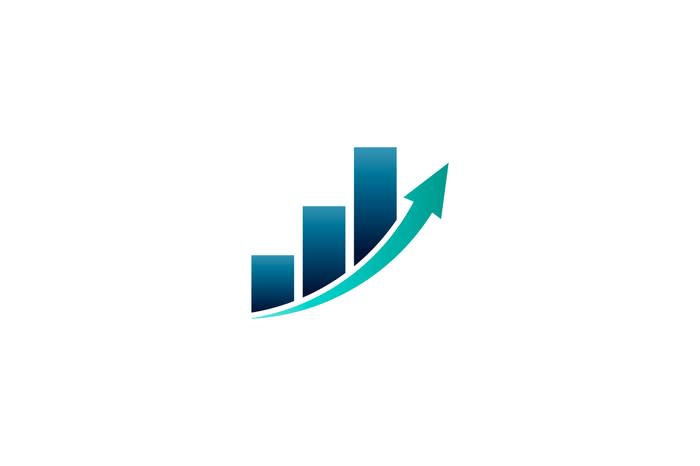Here's Why the Best Is Yet to Come for Danaher
With the markets embroiled in discussion over a potential recession in the near future and some leading indicators suggesting industrial production growth could turn negative in the coming months, it makes sense to start looking at some less cyclical stocks. One name to keep a close eye on is Danaher (NYSE: DHR). The investment case for the company combines an excellent management team, favorably exposed end markets, and the transformative acquisition of General Electric's (NYSE: GE) biopharma business. There's a lot to like about Danaher, and its best days are yet to come. Here's the lowdown.
Danaher is the new Danaher
GE's current CEO, Larry Culp, won a lot of praise for his longtime tenure as CEO of Danaher, and rightly so, but his successor, Tom Joyce, also deserves recognition for his actions in recent years. Joyce has led Danaher since September 2014 and is responsible for the successful integration of the company's largest-ever acquisition, namely the $13.5 billion purchase of Pall Corp. in 2015.

Image source: Getty Images.
The addition of Pall filtration solutions gave Joyce the scale to be able to spin off Danaher's industrial businesses into a new company, Fortive (NYSE: FTV), leaving the remaining Danaher to be acompany focused on life sciences, diagnostics, dental technology, and environmental solutions. As you can see below, both companies trade on higher valuations than they did at the time of the split and significantly outperformed the S&P 500 since the split -- Danaher is up 68%, with Fortive up around 41%.
(Note for the chart: Enterprise value is market cap plus net debt while EBITDA is earnings before interest, tax, depreciation, and amortization.)
FTV EV to EBITDA (TTM). Data by YCharts.
However, Joyce wasn't done with his corporate moves just yet. He took decisive action in 2018 in announcing the spinoff of the underperforming dental segment (to be called Envista) in the second half of 2019, and then in February 2019, Joyce went back to his former boss to buy GE's biopharma business for $21.4 billion -- set to be completed in late 2019.
GE BioPharma is a great deal for Danaher
The net price is $20 billion and GE BioPharma is a business growing at a core rate of 6%-7% with 75% of its revenue recurring and generating $1 billion in free cash flow (FCF). Paying 20 times FCF is a great bit of business when you consider that Danaher's stock currently trades on 30 times its rolling 12-month FCF.
The new company also fits perfectly with Danaher's collection of life science businesses. GE BioPharma manufacturers equipment and materials used to research and mass-produce biopharmaceuticals for autoimmune diseases such as rheumatoid arthritis -- a key area of research for the biggest biotech stocks.
Not only is it a good strategic fit from a product perspective, but it also plays to Danaher's aim of increasing its nonrecurring revenue from high-margin consumables -- you can see this in the excellent FCF generation.
Management expects the deal to add $0.45-$0.50 in adjusted EPS in its first year and reach at least $1 by the fifth year -- for reference analysts expect Danaher to generate $4.80 in EPS in 2019. Given Danaher and Joyce's track record of successfully integrating acquisitions, investors should welcome the deal.
Well positioned in current markets
Every industrial cycle has its own dynamic, and whereas the slowdown in 2015-2016 was characterized by a collapse in oil and gas and heavy industry capital spending in response to falling energy prices, the current slowdown has been led by a downturn in automotive production and weakness in semiconductors and electronics. Unfortunately, it appears to have spread into a broad-based industrial weakness.
However, Danaher's life science and diagnostics exposure makes it a safe place to hide and its full-year guidance for 5% core revenue growth looks conservative given the growth in the first two quarters was 5.5% and guidance is for 4.5% in the third quarter. While others have been forced to cut guidance in 2019, Danaher remains very much on track.
Danaher's future prospects
With a forward P/E ratio of around 28 times earnings, Danaher is hardly a cheap stock. On the other hand, the company's growth prospects look excellent and it's led by a first-class management team. Analysts have EPS growing 19% to $5.71 in 2020, and there will be underlying earnings growth from the GE BioPharma integration.
All told, the company has the potential to grow into its valuation, and investors might want to keep a close on the stock with a view to buying if it's sold off during any market malaise.
More From The Motley Fool
Lee Samaha has no position in any of the stocks mentioned. The Motley Fool has no position in any of the stocks mentioned. The Motley Fool has a disclosure policy.
This article was originally published on Fool.com

 Yahoo Finance
Yahoo Finance 